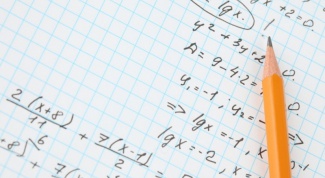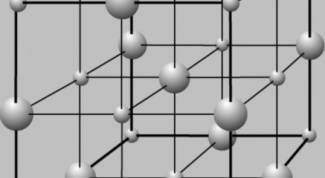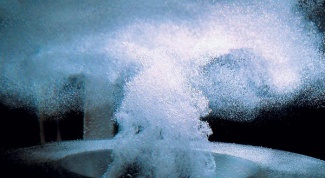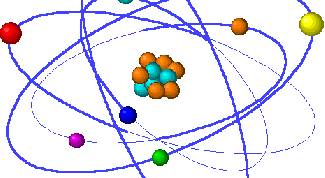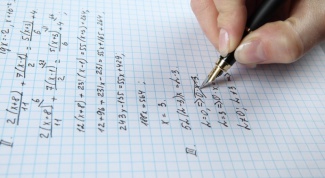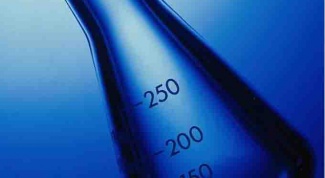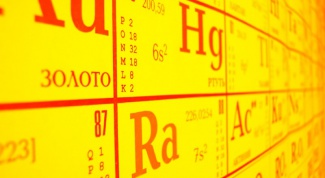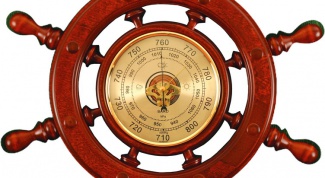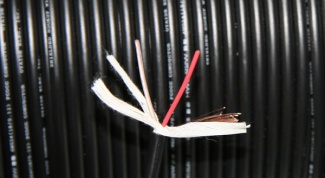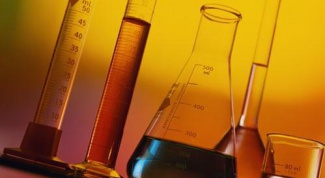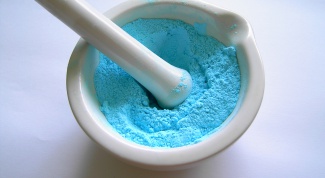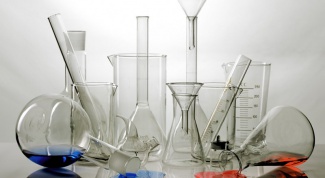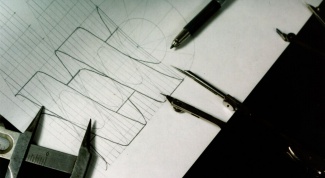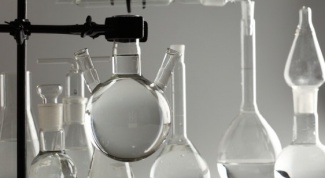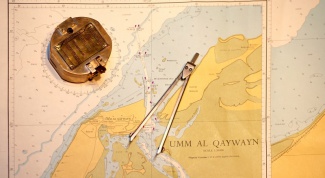Science
- How to calculate equivalent weight of the oxide and metal Equivalent that amount of a chemical element, which either binds or replaces one mole of hydrogen atoms. Accordingly, the mass of one equivalent is called the equivalent mass (Me), and is expressed in g/mol. To students in chemistry often aim to determine the equivalent mass of a substance (compound). For example, metal and formed them oxide.
- How to write the equation in the molecular and molecular-ionic forms A chemical equation is a record made in accordance with the rules. It describes reactions, that is, describes what substances took part in it and what was formed. The equation can be written in full form (molecular) and condensed (ion).
- How to determine the accuracy class of the instrument The class accuracy is one of the main characteristics of any measuring instrument. For each class there is a certain amount of allowable error. Any measurements are conducted in order to obtain the most reliable data on the physical data object. The measuring device must be consistent with the task. When assessing quality it is necessary to consider several parameters, including class of accuracy.
- How to find the radius of curvature of the trajectory When considering the motion of bodies used by a number of characterizing variables, e.g. the tangential and normal (centripetal) acceleration, velocity, and curvature of the trajectory. The radius of curvature is a geometric concept that refers to the radius of the circle R at which the body moves. This option can be found under the respective formulas using a custom motion path.
- How to determine the type of crystal lattice A crystal is a body whose particles (atoms, ions, molecules) are not in chaotic, but in a very specific order. This procedure is repeated periodically, as if forming an imaginary "grid". It is considered that there are four types of crystal lattices: metallic, ionic, atomic and molecular. And how can you determine what type of crystal lattice has a particular substance?
- How to calculate relative density of a substance Characteristics such as the relative density of matter, shows how many times it is heavier or lighter than other compounds. This parameter can be determined with respect to any gaseous substance. In most cases, calculations are performed relative to the air or hydrogen. However, there may be tasks that need to calculate the relative density of other gases, such as oxygen, ammonia or hydrogen sulfide. In any case, the principle of the decision of the task of one.
- How to calculate the enthalpy In any substance contains a certain amount of heat. This heat is called enthalpy. Enthalpy is a quantity characterizing the energy of the system. In physics and chemistry it shows the heat of reaction. It is an alternative to the internal energy, and this value is often set at a constant pressure, when the system has a certain amount of energy.
- How to find efficiency Coefficient of useful action shows the ratio of the useful work that is performed by a mechanism or device to expended. Often spent work take the amount of energy that the device consumes in order to perform the work.
- How to define anode and cathode To determine which of the electrodes is the anode, and a cathode, at first glance seems simple. It is considered that the anode has a negative charge and the cathode is positive. But in practice there may arise confusion in the definition.
- How to Express the magnitude of the formula In physics, quantities are quantitative characteristics of objects and indicators of the interaction of bodies between you and the environment, for example length, mass, speed, time, angles and so on. These parameters can be dependent or independent from one another. The attitude of many related quantities is presented in the well-known formulas, which can Express any variable.
- How to get from methane acetylene Acetylene is the simplest representative of a class of alkynes, i.e., hydrocarbons having in its molecule a triple bond. Its chemical formula is C2H2. It is a colorless gas, lighter than air, highly explosive and chemically active. Acetylene stored in steel sealed containers, charcoal.
- How to determine percentage concentration of the solution Percentage concentration of a solution is a value showing the ratio of the mass solute to the total weight of the solution. In other words, it is the mass fraction of a substance in solution, expressed in percent.
- How to calculate the mass of the substance In chemical reactions involved tiny particles (atoms, molecules), and their number even in a small portion of the substance is very large. Therefore, to simplify the calculations were introduced with a special unit of "amount of substance - mole. Containing 1 Mole of 6.02*1023 atoms or molecules. How to calculate the mass of a substance?
- How to determine the number of protons and neutrons The atom of any chemical element consists of the atomic nucleus and orbiting around it, electrons. And what is the atomic nucleus? In 1932 it was established that the atomic nucleus consists of protons and neutrons.
- How to determine the charge of the ion In some atoms and molecules can either acquire or lose electrons. In this case, the formed ion. Thus, the ion is a monatomic or polyatomic charged particles. Obviously, the most important characteristic of an ion is its charge.
- How to find the stiffness coefficient of the spring From the point of view of classical physics, a spring can be called a device, which accumulates potential energy by changing the distance between the atoms of the material from which the spring is made. Referring to the perceived load of the spring differenziata on: springs, compression springs, bending springs, torsion and spring tension. In characterizing each of these springs is of great importance to the ratio of its stiffness.
- How to calculate the titer Very often in chemical analysis is the mass concentration is used , the titer of the solution that shows the contents of any substance in each milliliter of solution. To record the titerand adopted the symbol in the form of a capital Latin letter t. A unit of measure g/ml .
- How to calculate the arc tangent In the presence of a personal computer there are several relatively simple ways to calculate trigonometric functions. These methods are equally suited for conventional computing functions (e.g., sine) and more complex (e.g., arctangent).
- How to determine atmospheric pressure Probably almost every day when you watch or listen to the weather reports, you only pay attention to temperature and possible precipitation. But forecasters mention a few important parameters and atmospheric pressure among them. In the General case the atmospheric pressure is the pressure of the atmosphere to the earth's surface and all objects on it. On the human body there is such a pressure, which pressure is equivalent to 15 tons of cargo. But we feel, as our bodies also have air.
- How to find the length of the conduit Find the length of the conductor it is very easy to measure. However, if the handler is unavailable or has a very large length, its direct measurement can be very difficult.
- How to write the equation of interaction of acids with alkalis The ability to write equations of the chemical reaction, for example, interaction of acids with alkalismay be useful during the practical works, laboratory experiments, and in testing during the exam in chemistry.
- What is amorphous body The amorphous body is a solid body, which does not have a crystalline structure. These include glass (artificial and volcanic), resins (natural and synthetic), glues, sealing wax, abinit, plastics, etc.
- How to find the concentration of a substance Concentration – the value characterizing the content of a substance per unit mass or volume of the mixture. It can be expressed in various ways. There are the following concentration: mass fraction, mole fraction, volume fraction and molar concentration.
- How to determine the velocity of the To determine the speed of uniform motion, we need a way to separate for a while. For uniformly accelerated motion need to initial velocity added to the acceleration multiplied by time.
- How to obtain acetic acid from methane Acetic acid – a substance with the chemical formula CH3COOH. It belongs to the class of carboxylic acids, widely distributed in nature. As a product of fermentation known to man since ancient times. Represents a colorless liquid with a characteristic and very sharp odor. Mixes well with water. How to get acetic acid?
- How to write equations of reactions in chemistry The reaction equation for the conditional entry of a chemical process in which some substances change into different change properties. To write chemical reactions using formulas of the substances and knowledge about the chemical properties of the compounds.
- How to draw a frame for the drawing To make it convenient to store and file drawings, they make the frame and the table with the basic information according to certain standards drawing. They are all described in the Standards.
- How to find absolute humidity Absolute humidity the mass of water vapour, which is located in unit volume of the gas, simply put, is the density of water vapor. Depending on temperature this value can vary. It can be measured, receiving the dew point or can be calculated via the relative humidity.
- How to find equilibrium constant Chemical equilibrium is the state of a chemical system when the flow rate of the forward and reverse chemical reactions are equal. That is, a condition in which the concentration of the initial substances and reaction products (or partial pressure) is not changed. And the constant of equilibrium Cu is the quantity that determines the ratio between these concentrations or pressures.
- How to determine the axial Meridian The axial meridians in the cartography are used in conjunction with the line of the equator for a rectangular coordinate system. These imaginary lines intersect at right angles and with a certain shift set the zero point of reference. If the line of the equator only one, axial meridians there are six dozen and their coordinates are determined by a specific formula.



